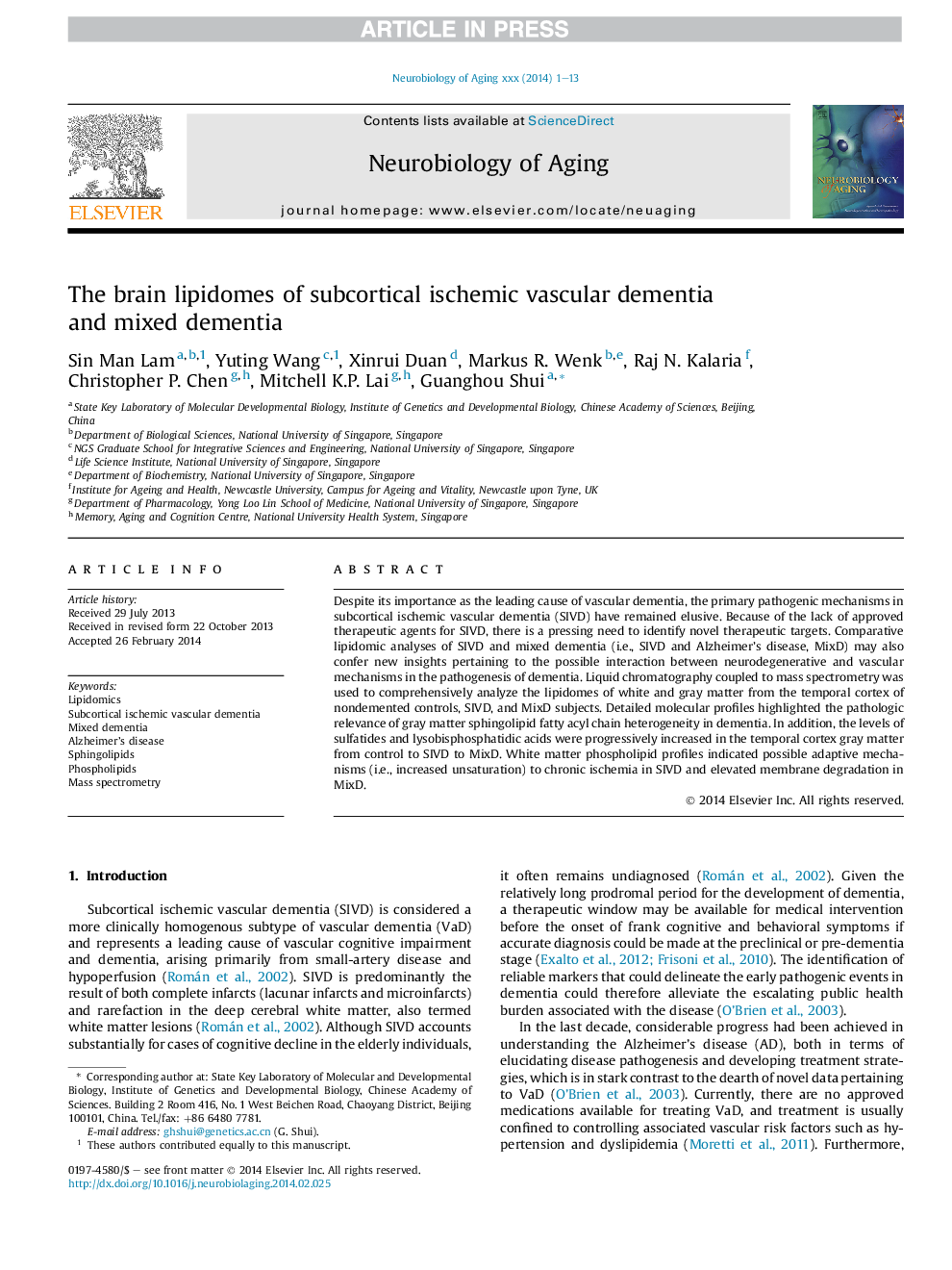| Article ID | Journal | Published Year | Pages | File Type |
|---|---|---|---|---|
| 6805579 | Neurobiology of Aging | 2014 | 13 Pages |
Abstract
Despite its importance as the leading cause of vascular dementia, the primary pathogenic mechanisms in subcortical ischemic vascular dementia (SIVD) have remained elusive. Because of the lack of approved therapeutic agents for SIVD, there is a pressing need to identify novel therapeutic targets. Comparative lipidomic analyses of SIVD and mixed dementia (i.e., SIVD and Alzheimer's disease, MixD) may also confer new insights pertaining to the possible interaction between neurodegenerative and vascular mechanisms in the pathogenesis of dementia. Liquid chromatography coupled to mass spectrometry was used to comprehensively analyze the lipidomes of white and gray matter from the temporal cortex of nondemented controls, SIVD, and MixD subjects. Detailed molecular profiles highlighted the pathologic relevance of gray matter sphingolipid fatty acyl chain heterogeneity in dementia. In addition, the levels of sulfatides and lysobisphosphatidic acids were progressively increased in the temporal cortex gray matter from control to SIVD to MixD. White matter phospholipid profiles indicated possible adaptive mechanisms (i.e., increased unsaturation) to chronic ischemia in SIVD and elevated membrane degradation in MixD.
Keywords
Related Topics
Life Sciences
Biochemistry, Genetics and Molecular Biology
Ageing
Authors
Sin Man Lam, Yuting Wang, Xinrui Duan, Markus R. Wenk, Raj N. Kalaria, Christopher P. Chen, Mitchell K.P. Lai, Guanghou Shui,
